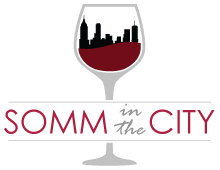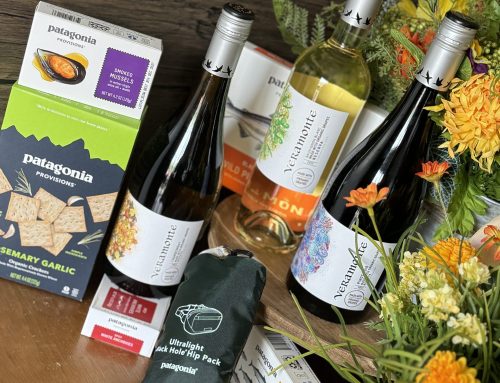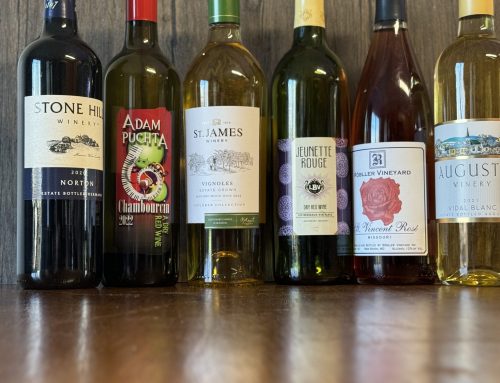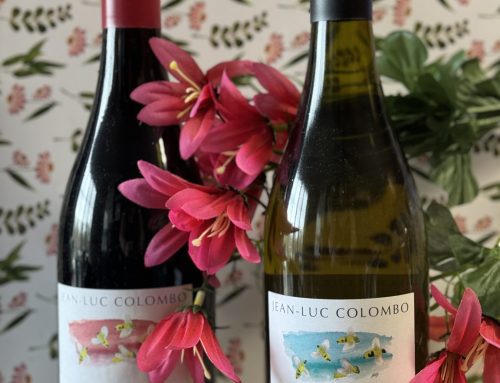“In the year 949, the owner of the Château de Poncié, called by its Latin name Villa Ponciago, donated his vineyard to the Abbey of Cluny, with the hope of saving his soul.” – Chateaudeponcie.fr

Picture via: Chateau De Poncie
All of those involved in this wonderful adventure has been to reflect the character of the Fleurie Cru, which produces wines that are authentic, rich and subtle. There is also an old map that shows the diversity of this French area, with 40 distinct terroirs and vineyards surround the 18th Century Castle.
The Domaine today is 120 hectares of land with only 46 hectares with the best  exposures. These hectares are used to grow vines that express their differences and characters, such as Brirette, Haut du Py, Muriers, Carcans, Montgenas, Poncié, Le Pré Roi, La Salomine, and more. These are different parcels which benefit from various different exposures as well as a variety of terroirs.
exposures. These hectares are used to grow vines that express their differences and characters, such as Brirette, Haut du Py, Muriers, Carcans, Montgenas, Poncié, Le Pré Roi, La Salomine, and more. These are different parcels which benefit from various different exposures as well as a variety of terroirs.
The driving force behind Château de Poncié’s wines is the altitude of the vineyards, and the off forcing rainwater, which helps the vine roots dig deep into the ground. This diversity is what drives the winery and it’s the biggest asset, while the rest of the land is a combination of fields and woods. Filled with 100-year-old cedars that shape the landscape and preserve the biodiversity of the land.
 What’s interesting and makes these wines unique, is the care and craft that each parcel receives, in order to make sure the terroir is in full expression in the wine. The vineyard yields are naturally reduced, due to the “tailor-made” care that goes into each plot of land. This often involves replacing whole sections: six hectares of old gobelet (free standing) vines. These vines are pulled-up and replaced with young, wire-trained vines, which allow the bunches of grapes to ripen better.
What’s interesting and makes these wines unique, is the care and craft that each parcel receives, in order to make sure the terroir is in full expression in the wine. The vineyard yields are naturally reduced, due to the “tailor-made” care that goes into each plot of land. This often involves replacing whole sections: six hectares of old gobelet (free standing) vines. These vines are pulled-up and replaced with young, wire-trained vines, which allow the bunches of grapes to ripen better.
During the winemaking process, the winemaking team refuses to use methods which may rush the process and disturb the natural order of the wine. The winemaking team uses methods such as cold maceration and long fermentation times to help produce more subtle aromas. They also age the juice in used oak barrels, which helps integrate the tannins and delicately brings out the silky character of the wine. This pays tribute to Cru Fleurie annually.
 I had the pleasure this season of tasting these wines while attending the Chateau de Poncié Garden Party! It was held at Bobo, a great West Village spot and hosted by Frédéric Weber, the cellarmaster for both Château de Poncié and Bouchard Père & Fils. Summer is one of my favorite times to host parties, picnics, and more. It’s also a great time of year to sip Beaujolais, and I was so pleased with Château de Ponciés vintages.
I had the pleasure this season of tasting these wines while attending the Chateau de Poncié Garden Party! It was held at Bobo, a great West Village spot and hosted by Frédéric Weber, the cellarmaster for both Château de Poncié and Bouchard Père & Fils. Summer is one of my favorite times to host parties, picnics, and more. It’s also a great time of year to sip Beaujolais, and I was so pleased with Château de Ponciés vintages.
In this region of France, Gamay is the dominant grape. These red wines are all made from Gamay, and Beaujolais can range from entry-level to mid-level to high levels in pricing. Don’t be fooled, these wines are mid price range around $22.99/bottle, but they are of excellent quality and carefully crafted. In fact, about 100 people work and hand- harvest the vineyards every vintage!
We sipped the 2014 Fleurie La Salomine, which has southeast exposure, sloping hillsides, and clay soils. This wine is intense purple with maturity on the nose, followed by intense fruit, minerality, and freshness on the palate. The 2014 Fleurie La Pré Roi is another exceptional wine in which, “Situated on the knoll of Poncié and the hill of Montgenas, terroir on slopes of crystalline rock, at the same time dry and demanding, combines the conditions needed for rediscovering the historic qualities that made Fleurie’s reputation.”- Chateaudeponcie.fr
 This wine is garnet in color with elegant aromas of cherry and blueberry. It has balance and structure with expressive red and purple fruit notes, some spice undertones, and an attractive richness.
This wine is garnet in color with elegant aromas of cherry and blueberry. It has balance and structure with expressive red and purple fruit notes, some spice undertones, and an attractive richness.
In order to make this the perfect garden party this summer, you’ll not only need these wines, but you will want to make sure you have a selection of cheeses, charcuterie, and grilled vegetables. I find that creamy cheeses work well with the softer tannins in these wines. Salty meats, and even slightly spicy ones work well with Beaujolais too. If you’re going with vegetables, try to get a nice char on your peppers, tomatoes, and other grilled vegetables, and you’ll find those smokier notes really accentuate the terroir characters in the wines.
Always remember, eat what you like and drink what you love. Please pair responsibly!





Leave A Comment